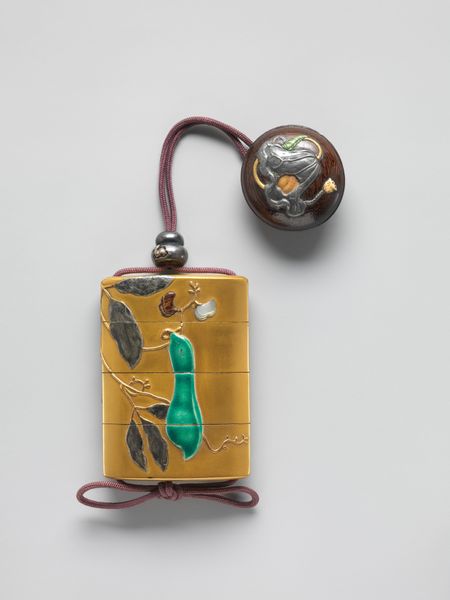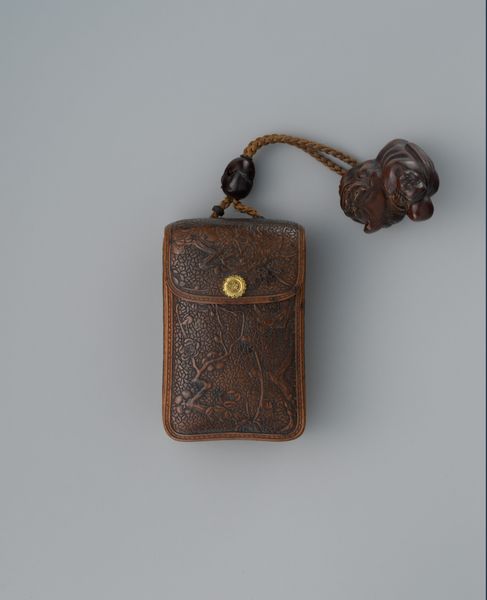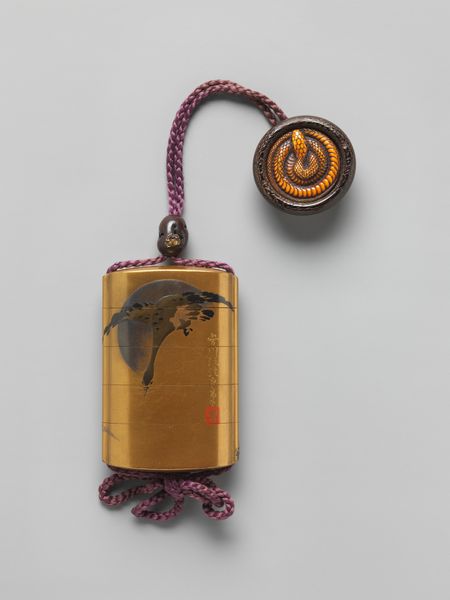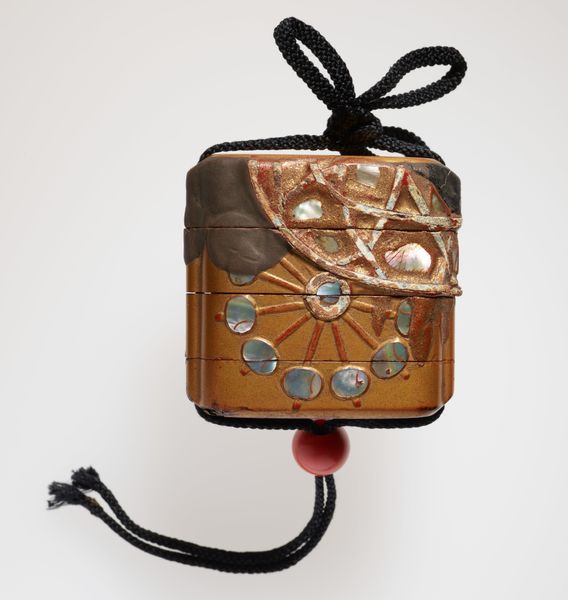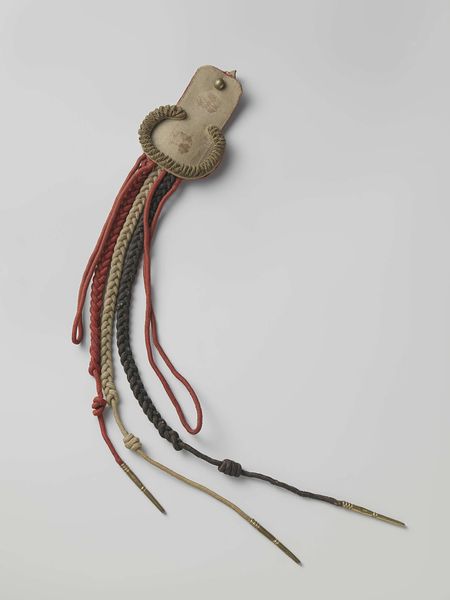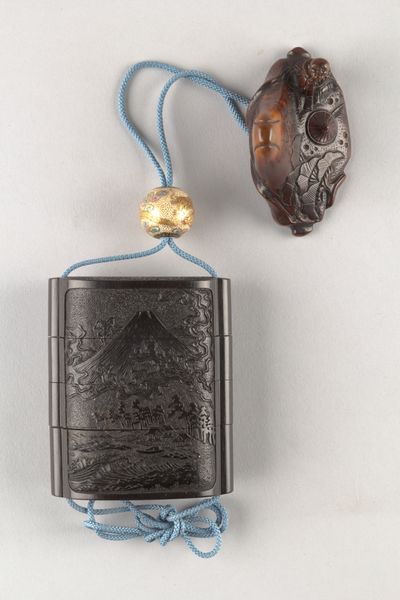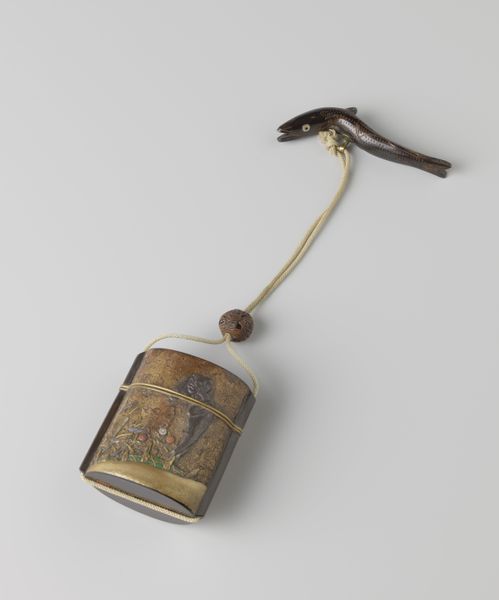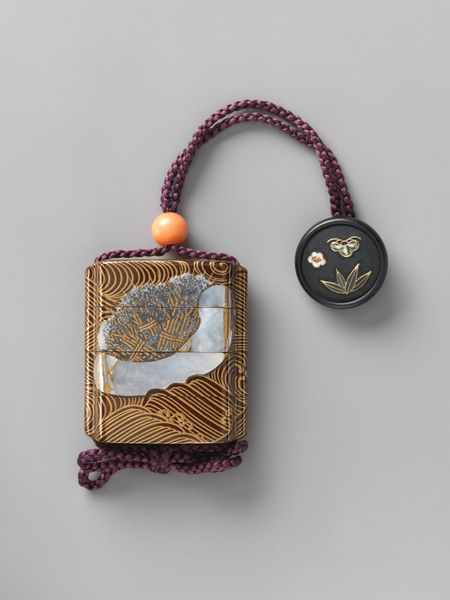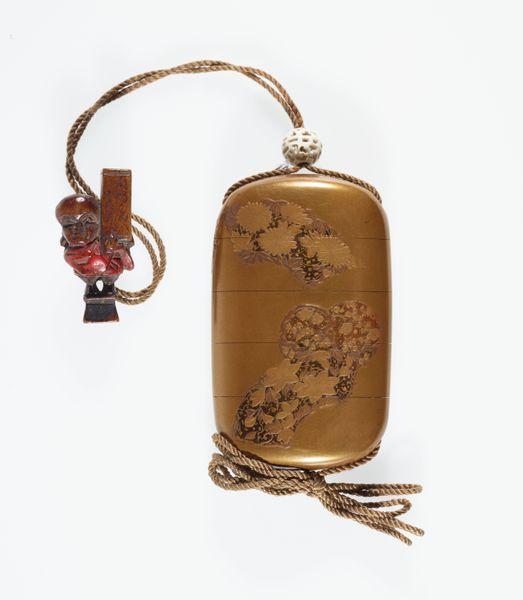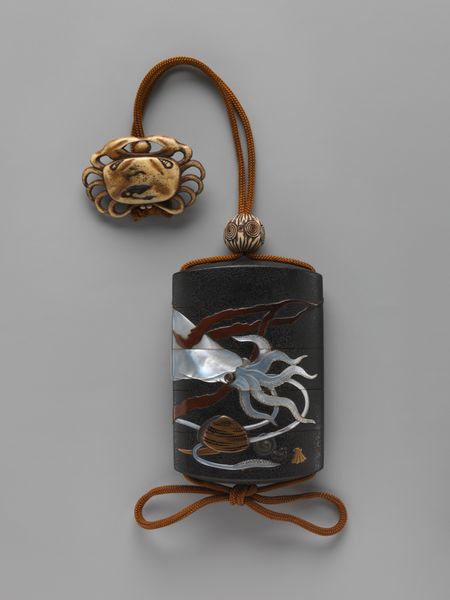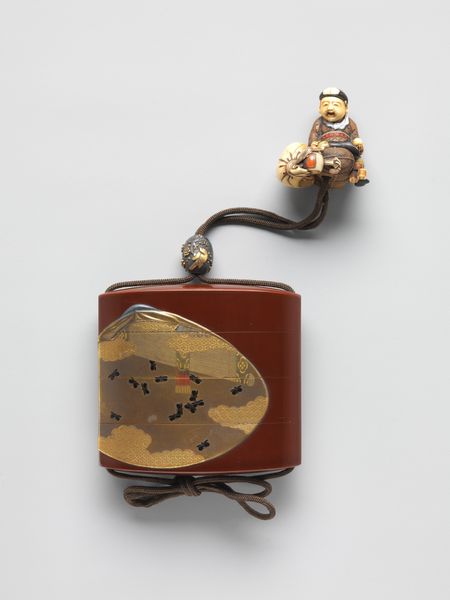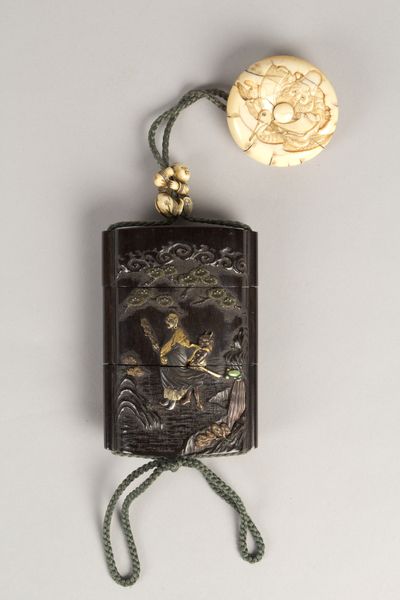
#
asian-art
#
decorative-art
Dimensions: Overall (inro): H. 1 15/16 in. (5 cm); W. 1 3/4 in. (4.4 cm); D. 11/16 in. (1.7 cm) Overall (netsuke): H. 11/16 in. (1.7 cm); W. 1 3/16 in. (3 cm); L. 1 9/16 in. (4 cm) Overall (ojime): H. 3/8 in. (1 cm); W. 3/16 in. (0.5 cm); D. 3/16 in. (0.5 cm)
Copyright: Public Domain
This is an Inrō with Stylized Waves, made by Shibata Zeshin in Japan, though we don't have a specific date for its creation. The inrō, netsuke, and ojime, components of traditional Japanese fashion, are more than mere decorative objects. They reflect the social structure of their time. In Edo-period Japan, the ruling class dictated strict codes for clothing and accessories. The craftsmanship and materials used in objects like this inrō announced social standing and wealth. The stylized waves are a visual motif that can be read through the lens of Japan’s island geography and complex relationship with the sea, both a source of sustenance and a potential threat. To understand this piece fully, we delve into the history of Japanese art institutions. The patronage systems and artistic schools of the time shaped artists like Zeshin, influencing their style and subject matter. By researching these social and institutional contexts, we see how art is always a product of its time, reflecting and commenting on the world in which it was made.
Comments
No comments
Be the first to comment and join the conversation on the ultimate creative platform.
